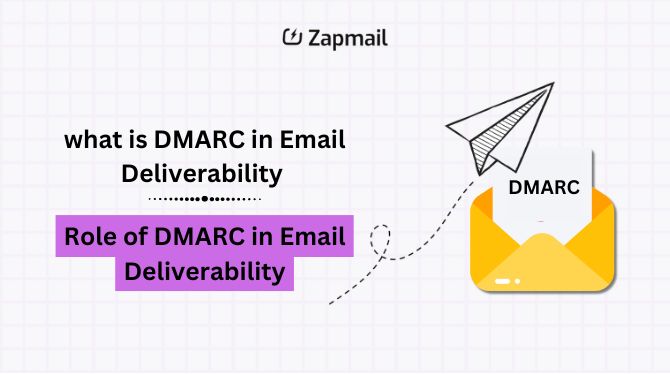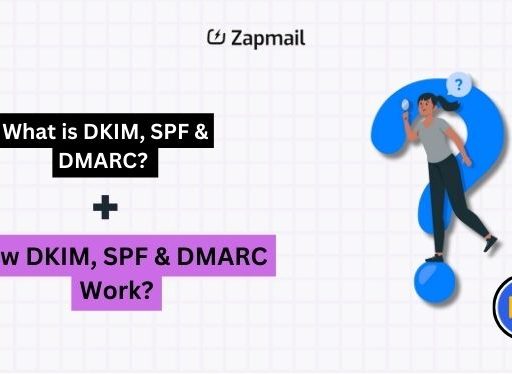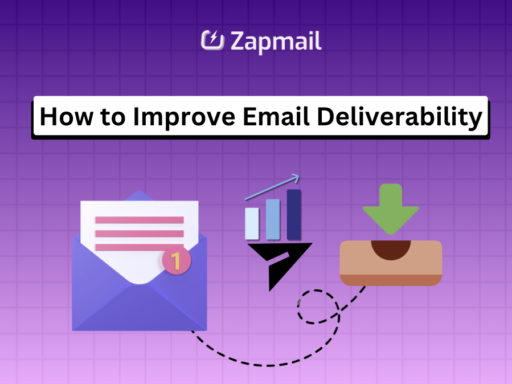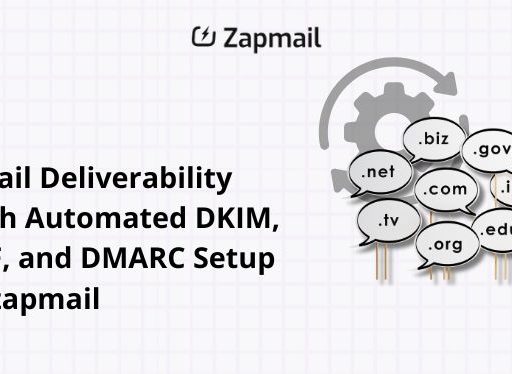Understanding DMARC in deliverability is crucial for secure email communication. DMARC stands for Domain-based Message Authentication, Reporting, and Conformance. It’s a protocol that protects against unauthorized use of your domain in emails. By telling ISPs how to handle emails that don’t meet DMARC authentication standards, you can boost your email deliverability. The main goal of DMARC policy is to keep your emails from being marked as spam or phishing.

The best outcome of DMARC policy is a “reject” policy. This tells receiving servers to reject emails that fail authentication. While DMARC authentication doesn’t solve all email delivery issues, it’s a strong start. It helps secure your email communication and increases your chances of getting emails to the right inbox.
Key Takeaways
- Email deliverability relies on using DMARC consistently, improving your reputation and trust.
- Using DMARC correctly can lead to up to a 10% increase in emails reaching inboxes.
- DMARC works with SPF and DKIM to fight spam and phishing.
- Switching to a “reject” DMARC policy should be done gradually, aiming for 100% enforcement.
- Combining DMARC with good email marketing practices is key for better deliverability.
- Using DMARC makes your emails less likely to be seen as spam, improving open and click rates.
- As cyber threats evolve, DMARC keeps your email deliverability strategies up to date.
Understanding Email Deliverability and its Significance
Email deliverability is key to successful email marketing. It makes sure your emails reach the inbox, not the spam folder. This is different from just sending an email, which only confirms it’s on the server.
The Basics of Email Deliverability
Email deliverability relies on several important factors. These include email authentication standards like SPF, DKIM, and DMARC. These help prove you’re allowed to send emails, improving your reputation with ISPs and getting more emails into inboxes.
Factors Affecting Email Deliverability
- Sender Reputation: This is based on how many emails you send, how often, and how people interact with them.
- Email Authentication: Using standards like DMARC makes your emails more trustworthy. This can lead to better engagement and a stronger reputation, helping fight off spam and phishing.
- ISP Policies: ISPs use their own rules to decide if your email goes to the inbox. These rules often depend on your use of email authentication and how well your emails are received.
Distinction Between Delivery and Deliverability
Knowing the difference between delivery and deliverability is important. Delivery means the email has reached the provider. Deliverability means it’s actually in the inbox. Achieving high deliverability rates requires following strict email authentication rules, keeping a good sender reputation, and following ISP guidelines.
By focusing on these key areas, businesses can improve their email deliverability. This ensures their messages not only get to their audience but also connect with them. So, getting into the inbox is not just luck but the result of careful planning and following best email practices.
DMARC: The Foundation of Trust and Security in Email Communication
Securing email integrity and trust is key in today’s digital world. DMARC (Domain-based Message Authentication, Reporting, and Conformance) is a big step forward. It works with SPF and DKIM to make emails safer.
What is DMARC?
DMARC helps domain owners control their emails. It checks if emails are real using DKIM and SPF. If not, it reports any issues. This keeps emails safe and secure.
How DMARC Works with SPF and DKIM
DMARC, SPF, and DKIM work together to protect emails. SPF checks if the sender is allowed to send emails. DKIM adds a secret code to check if the email is real. DMARC then decides what to do with emails that don’t pass these checks.
- SPF stops fake emails by checking sender IP addresses.
- DKIM checks if the email’s content is safe with a secret code.
- DMARC lets domain owners decide what to do with emails that don’t pass checks.
The Importance of Authentication Standards in Email Security
Using DMARC, DKIM, and SPF keeps emails safe from hackers. DMARC reporting helps businesses see who is using their domain. This helps them follow data protection laws.
DMARC also makes sure emails get to the right inbox. Big names like Google and Yahoo require DMARC. This makes it a must-have for businesses everywhere.
- DMARC helps emails get to the inbox, not the spam folder.
- Using DMARC can make customers trust you more. This can lead to more sales and happy customers.
- DMARC reports help improve email security and fight fraud.
In short, DMARC is a big help in keeping emails safe. It works with SPF and DKIM to make sure emails are trustworthy and secure worldwide.
Role of DMARC in Deliverability
DMARC plays a key role in keeping emails safe and making sure only real emails reach our inboxes. It was created in 2012 to fight email scams and phishing. This helps keep our emails secure and trustworthy.
DMARC checks if an email is really from who it says it is. This is important because most attacks start with email. It makes sure emails are genuine by checking SPF and DKIM.
- Email Fraud Prevention: DMARC lets domain owners tell ISPs what to do with fake emails. ISPs can block these emails, keeping them out of our inboxes.
- Phishing Attacks Reduction: DMARC only lets emails that pass checks through. This stops phishers from tricking us into giving out personal info.
- Boost in Sender Credibility: When ISPs see a strict DMARC policy, they trust the sender more. This means more emails get through, as they are seen as authentic.
Big email providers like Gmail and Yahoo now require DMARC for bulk senders. This is to keep their users safe by 2024. For businesses, this means DMARC is not just good, it’s essential.
DMARC does more than just protect against scams. It also makes sure real emails get through. This is why DMARC is so important in today’s world of emails.
The Impact of DMARC on Sender Reputation and Inbox Placement
Email is key for businesses today. Domain-based Message Authentication, Reporting, and Conformance (DMARC) is crucial. It boosts credibility and ensures emails reach their targets, avoiding spam filters.
Building a Strong Sender Reputation with DMARC
Sender reputation is key to getting emails to the inbox. DMARC helps by verifying emails, reducing spoofing and phishing. With DMARC, companies see better sender scores and reputation. This makes their emails trusted by ISPs and recipients.
Navigating ISP Filters to Reach the Inbox
Getting past ISP spam filters is tough. DMARC helps by showing emails are legit and verified. This can increase inbox placement by 60-70%, showing DMARC’s power.
Mitigating the Risk of Email Fraud with DMARC Policy Enforcement
Phishing emails are a big problem, with billions sent daily. DMARC lets domain owners control what happens to unverified emails. They can block or quarantine them, lowering fraud risk. This makes emails safer and builds trust with your audience.
DMARC Implementation: Boosting Email Deliverability for Cold Email Campaigns
For businesses using email marketing, DMARC is key to success. It’s not just about security; it’s about making sure emails get through. DMARC helps prevent emails from being seen as threats and blocked. Using DMARC fully can boost email delivery rates by 15%.
DMARC also helps with legitimate email conversion through BIMI implementation. BIMI lets brands show their logo in emails, making them look more trustworthy. This is vital for cold emails. Companies with strict DMARC policies see a 30% boost in email security.
Adding DMARC to your email strategy is more than just security. It’s about making sure your marketing reaches the right people. By setting up SPF and DKIM records and managing DMARC well, you can cut phishing attempts by 25%. This focus on DMARC builds trust, which is key for success in today’s world.
FAQ
DMARC is a protocol that helps protect domains from unauthorized email use. It works with ISPs to ensure legitimate emails reach the inbox. This reduces the risk of email fraud.
Email deliverability is key for getting emails to the right inbox. It’s crucial for email marketing success and building trust with customers.
Deliverability means emails land in the inbox. It involves a good sender reputation and email authentication. This makes emails seem legitimate and not spam.
Several things can impact deliverability. These include email content, sender reputation, and user engagement. Also, proper use of authentication standards and ISP policies matter.
Delivery means an email reaches the recipient’s provider. Deliverability is about getting it to the user’s inbox. It involves beating spam filters and following authentication rules.
DMARC, SPF, and DKIM verify sender identity and ensure email integrity. SPF sets allowed IP addresses. DKIM encrypts and signs emails. DMARC guides ISPs on handling unauthenticated emails.
Authentication standards protect against phishing and spoofing. They verify emails come from a trusted source and haven’t been tampered with. This builds trust and improves deliverability.
DMARC helps by setting policies to reject unauthorized emails. This reduces phishing and spoofing risks. It protects the domain and recipients from malicious emails.
A strong DMARC policy shows a domain cares about email security. It boosts sender credibility and improves inbox placement. This is key for a positive sender reputation.
DMARC policy authenticates emails and ensures they follow the sender’s policy. This helps ISPs deliver these emails to the inbox, avoiding spam flags.
DMARC is crucial in fighting email fraud. It sets rules to prevent unauthorized domain use in emails. This protects the domain and its users from fraud.
DMARC makes cold emails more legitimate and trustworthy. With a clear policy, these emails are less likely to be marked as spam. This boosts deliverability and engagement with leads. Features like BIMI also increase brand recognition.



